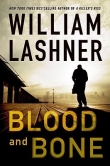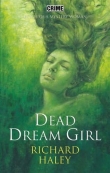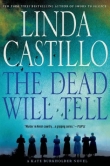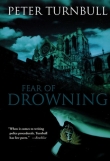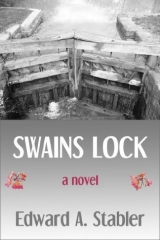
Текст книги "Swains Lock"
Автор книги: Edward A. Stabler
Жанры:
Триллеры
,сообщить о нарушении
Текущая страница: 23 (всего у книги 25 страниц)
Chapter 36
Joined Sycamores
Friday, September 6, 1996
When Vin glided to a stop on the towpath, slanting sunlight was piercing the pebbled clouds and painting the lockhouse walls at Swains Lock. Past the scattered cars in the lot, two canoe racks stood against the ascending green of the berm. They held inverted aluminum canoes that looked old, with dented hulls and boat numbers stenciled in fading black paint. He locked his bike to a post and straightened his mud-spattered shorts, pushing the contents of his pockets down to secure them. A quick reconnaissance showed a middle-aged couple approaching along the towpath from downstream and a man loading a mountain bike onto his car rack.
Vin walked casually up Swains Lock Road, then stepped into the woods and found his canoe paddle and shovel where he’d left them, leaning against a thick swamp oak. He carried them back to the lot, where the middle-aged couple had reached their car.
He crossed the footbridge and walked down onto the apron between the towpath and the river. Its flat dirt floor was punctuated with old trees and a few campsites that were used regularly in the summer but had been closed by the Park Service yesterday as part of the protocol for a regional hurricane. Now the apron was deserted. He followed a shallow draw that dropped onto a flat mud landing where it met the river. Hopping down to the landing, he laid his shovel and paddle against the wet bank. On his return to the lot he scouted for potential witnesses.
A woman walking her tiny dog was a hundred yards away upstream, headed toward Swains. Even if she’s parked in the lot, he thought, I can cut a canoe loose before she sees me. He jogged across the footbridge, then fell into a frustrated stroll as a Volvo rolled into view. With the dog-walker getting closer, now he’d have to wait another five minutes. At least the gray Audi hadn’t reappeared.
He sat down at a wet picnic table. No point in trying to stay dry, he thought, if I’m going to be hacking my way through the woods. Tapping his foot impatiently, he thought about the best way to search the island. His atlas showed that it was shaped like an almond. If he landed at the tail end, he could approach the island’s head along a path halfway between the center and the Maryland side, then return on a line between the center and the Virginia side. It was narrow enough that Lee Fisher’s clearing should be visible from one of those two routes. And if the clearing were overgrown, he should still be able to spot the joined sycamores.
The man driving the Volvo let two large poodles out of the back, then led them across the footbridge and down the towpath The woman with the Pekingese took forever to towel off her dog and start her car. Vin tapped his foot as his frustration mounted. It was a bit after seven now – how long much longer could he wait? The Audi might creep into the lot at any minute. What if Kelsey Ainge saw him paddle out to Gladys Island? She might follow him, or lie in wait when he returned. The Pekingese-owner crept out of her parking spot and eased away.
He loped back to the towpath. The man with the poodles was receding and no one was approaching from either direction. Adrenaline sent him sprinting to the canoe rack. No cars were visible on Swains Lock Road. He chose the waist-level canoe closest to the berm, then crouched to assess it.
A thin wire cable was looped under the stern seat and around the nearest cross-arm, its ends connected by a padlock. He pulled out his wire-cutters and cut the cable in a single snip. A sound startled him and he froze; it sounded like a woman’s voice, calling cheerfully to someone nearby. He laid the wire-cutters down and stood up, turning slowly in place to survey the gravel lot and the area around the lock, but heard and saw nothing. He crouched to pull the cable free, then stood up and looked again – nothing.
Now it was time to appear deliberate and unconcerned. He reached an arm over the canoe at its mid-point and stepped back to lift it. Once clear of the rack, he elevated the bow, ducked inside, adjusted his grip, and started across the lot. I could just drag it down to the river, he thought; that’s probably how a lot of people treat these canoes. But this way I look like I know what I’m doing. Let’s hope I know what I’m doing. He portaged across the apron to the dirt pitch and slid the canoe down the bank to the landing.
If the river was already rising, the landing would be underwater, he thought. He looked out past the eddy line and the current toward Gladys Island. Most of the channel was only chest-deep and the sunlit shoulders of scattered rocks still broke the surface, as they had for most of the summer. Not for much longer. He scrambled down the bank, slid his paddle and shovel into the canoe, stepped in with one foot and pushed off.
It felt strange sitting in the bow seat and paddling the canoe stern first, which was how you piloted a two-man canoe by yourself. All of his recent outings had been with Nicky. He stroked on alternate sides to gain momentum, then aimed upstream as he crossed the eddy line. He set a narrow ferry angle and paddled hard on his left to keep the current from swinging the bow downstream. If that happened he’d be swept down past the island. Away from shore, an army of evanescent wave crests bobbed toward him, stretching into the distance upriver. When an occasional slap of chop swung the canoe straight into the current, he reset the angle with a sweep to starboard. The light breeze and the sound of waves sliding under the hull made it seem like the boat was moving faster than it really was. From the perspective of someone watching from the shore, he was moving steadily across the river and slipping slowly downstream.
The current diminished as he approached the rocky tail of Gladys Island. When he closed within a few boat lengths, he back-paddled on port to spin the canoe. The bank was a steep mud pitch that rose six feet from the water before flattening out on the island’s wooded terrain. He paddled down along it until he found a spot where three rocks protruded from a small inlet. Probably a miniature drainage for the island. He maneuvered the canoe until it was lightly grounded between the rocks and nudging the cut dirt bank. There was no way to climb out without submerging his feet in deep silt at the water’s edge, but he’d worn his old running shoes for that reason. He pulled the canoe further up the cut, then grabbed the shovel and studied his landing area. A light sweat dotted his torso and his t-shirt clung to his back. He caught his breath, squinting into the darkening thicket.
The nearest trees were box elders and oaks interspersed with thigh-high vines and ferns. He beat his way in from the bank, avoiding clusters of poison ivy, ducking under wet branches, using the shovel as a machete to bat pricker bushes aside. Scattered large flat rocks and fallen trees created open spaces. He took a dozen steps inland and turned toward the head of the island, occasionally scouting the branches overhead for open sky that would signify a clearing. The first sycamore emerged on his left. Its scaling bark fell away to pale wood halfway up the trunk and its highest branches fanned out sixty feet above him. But it wasn’t part of Lee Fisher’s trinity.
He left it behind, proceeding past the broad waist of the island. A young sycamore, and then a massive one, extending a thick arm out over the river, appeared on each side as the island’s curving profile pushed him leftward. The upstream end was shaped like a fish-head and defined by a narrow channel separating it from the broken tail of Watkins Island. He knew he was near it when the sky closed in from both sides. It was past sunset now; orange waves in the western sky were fading to crimson, purple, and gray.
When he concluded there was no triad of sycamores near the head of the island, he thrashed the shovel through vines and picked his way toward the Virginia side before turning to head back downstream. On this route he found evidence of prior travelers scattered through the brush: rusted beer cans, a tangle of fishing line, the remnants of a wooden stepladder. He crossed a fern-infested gully and stumbled into an old campsite with a fire ring of blackened stones under a canopy of branches. This must have been a fisherman’s camp, he guessed; the Virginia-facing bank had shelves of broken rocks reaching out into the river – better than the Maryland-facing bank for launching small boats. There were no sycamores around the campsite, though it was getting harder to identify trees in the failing light.
He pushed on through the brush, detouring around a fallen trunk. The face of his watch was unreadable, so he pushed the backlight button – seven forty-five. He twisted his headlamp on and stretched the straps over his head. Twilight was yielding to ambient light from the open sky over the river. He swung the shovel in frustration against shadowy foliage as his silt-stained legs stung from their encounters with vines and his shirt clung to his chest and back.
Why am I looking, he asked himself, for Lee Fisher’s “truth?” Why search for something that nobody else – except possibly Kelsey Ainge – knows or cares about… if it even exists? It’s Friday night, he thought, and Nicky is coming home at the end of a long work-week. Right now we should be slicing up a baguette and cheese, eating olives, pouring red wine. What missing thing from that sure-footed surface-world has led me here, to hack through dark, dripping woods in the middle of an untamed and rising river? He resisted framing the answer in words because he knew it was an inexorcisable aspect of himself – the part that wanted to believe there was something mysterious and valuable hidden close at hand, something others couldn't see. The trait that in childhood had him imagining rough gemstones imprisoned in the rocks on a hillside, or gold dust stirred into the sand beneath his feet.
He ducked under the branches of a box elder and stepped onto a furrowed rock that only extended an inch or two from the ground. It was part of a cluster of low rocks that thinned the woods. Before him was a tree with scaling bark, maybe a river birch. He bypassed it on the stepping-stone rocks, using the shovel as a walking stick, then saw two forgettable trees in his path… and beyond them the silhouette of an enormous trunk. He stopped in place and his heart beat faster as he lifted his eyes to the treetops. Soaring above the clutter of neighboring branches, the arching, bone-white arms of a tall sycamore stretched into the darkness in all directions. He took a deep breath and exhaled, then pulled off his headlamp and swept back his hair. He put the lamp back on and aimed its beam at the base of the tree. It was the largest sycamore he had ever seen.
There was open space behind it – a clearing. As he drew near, his headlamp found a dark seam that rose from the ground to a few feet overhead. Above it the trunk split into arms of an elongated V. He smiled and slid his hand to the balance point of the shovel, then clocked around the sycamore and into the clearing. Moss and thin grass over flat rocks, and the third conjoined trunk emerged. A soft breeze stirred the clearing as drying sweat chilled his arms. He looked up and saw a dark carpet of shifting leaves against the sky, held aloft by swaying branches that conjured a forest of fallen antlers. He lowered the shovel blade to the moss-covered rock and rested against it, hands on the shaft, smiling involuntarily and wagging his head in admiration. After almost a year of futility and false starts, he had found Lee Fisher’s joined sycamores. For reasons he couldn’t explain, his eyes momentarily teared with gratitude. He recited the last half of Lee’s note to himself as thoughtlessly as a familiar prayer.
One tree leads to the money, the second leads to the killers and the third leads to the dead. In your search for me you may find the truth. Be careful you don’t share my fate.
Was he about to learn Lee Fisher’s fate? He hefted the shovel and approached the tree. Along the clearing’s perimeter, the moss-covered rocks gave way to thin topsoil and wispy meadow grass. He stood at the roots and touched flaking patches of tan and gray bark with his fingertips. This was the sycamore’s third trunk. Or maybe the first, he thought, since it was closest to the clearing. Did it lead to the money, the killers or the dead? He squinted at the roots fanning out beside his feet, then assessed the trunk up to eye level and beyond. It seemed completely normal, bearing nothing that could be interpreted as a sign.
I may be buried along with the others, at the base of three joined sycamores at the edge of a clearing.
He drove the shovel blade straight into the earth, feeling the grind of small roots and stones transmitted to his hands. The digging would be slow work here. He freed the blade and circled counter-clockwise around the tree.
Of the three trunks, the next was closest to the Maryland shore. He aimed the headlamp’s glow at its base. Raising the light steadily up the trunk, he scanned for a mark or sign. Just above the level of his eyes he found one, and his fingers reached to trace it. Two parallel diagonal slashes. The surrounding bark had scaled away and the slashes were blistered scars on the smooth skin of the trunk. What did they mean? The second tree leads to the killers? If so, this was the trunk he cared least about.
He continued to the trunk nearest the Virginia shore, then aimed his headlamp at the roots and guided the glow upward. At eye-level he saw a smooth patch where the bark had skinned off, and he felt a surge of vindication as a symbol slid into view. The mason’s mark! This was its fifth appearance. First on the plank of siding in the Pennyfield shed. Then on the photo in Kelsey Ainge’s studio, where he had learned its name. Then carved in stone on Bear Island – the mark Kelsey had photographed. And again just yesterday, traced in the dust of his rear window at Sharpsburg.
Like the slashes, the mark in front of him was scabbed and coarse, discolored with decades of aging. He ran a finger along its C-curve, then along the three rays. Was this Lee Fisher’s symbol? Did he chisel it on the Bear Island stop-gate? If not, what did it mean?
He steered the lamplight further up the trunk, where he’d sensed the presence of another mark, then stepped back and took a deep breath. Not one, but a string of them, rising from the mason’s mark along the axis of the trunk. Initials. The lowest read KE. Next LF. K. Elgin? Lee Fisher? His throat tightened. The third tree leads to the dead. The top-most initials seemed to be carved in a different hand. MG. They were aged and gray but less blistered than the prior pair. As if they had seen fewer rings of growth.
He took a deep breath and set the shovel blade an arm’s length from the base of the trunk. This was Lee Fisher’s unfulfilled wish, he reminded himself. “In your search for me you may find the truth.” He slammed his heel down, driving the blade into the earth. What did he need to find? Whether Lee’s fear of being killed and buried along with the others had been realized. He could never identify a decomposed corpse, so he would settle for any sign of human remains… a femur or an ulna, a finger or a skull. He turned the first shovelful and studied it under his headlamp but found only pebbles and mud.
Expanding the hole from the center, he examined more shovelfuls, working around a snake-sized root. Then a strike caught something solid. Not another root, because he was able to work the blade beneath it and scoop it out. A small rock? He dumped the shovel’s contents onto the growing dirt pile to his right and directed the light onto it.
A rectangular shape caught his eye. He picked it up, scraping away the caked mud that covered it. A knob emerged on one end, with a dark cord wrapped around it. Near the neck, the dull glitter of dirty glass. The shape was a flask, encased by a black, rotting holster that may have once been leather. He scraped more mud away, then stopped for fear of destroying the holster. Did this discovery mean anything? Maybe the killers had been drinking during the burial and tossed the flask on top of the bodies as they filled in the grave.
There was something inserted between the holster and the flask, and he tried to work it loose with his fingers, unwrapping the cord from the bottleneck to pull it free. Under the glow of his headlamp, it looked like a leaf-shaped pendant of some kind, made of stone. One face was dirt-stained but unmarked, as far as he could tell. As he cleaned the other face, dirt held inside an etching and the emblem emerged again – a sixth sighting of the now-familiar mark. He gently dislodged the dirt with his fingernails. There was no mistaking the C-curve and converging rays; they had become shorthand for his search and the symbol of things beyond his grasp. He laid the pendant down on the dirt pile and raised the shovel again.
More barren shovelfuls before the blade stabbed something solid. He stopped to illuminate and probe the hole, scraping away loose dirt to reveal a root wider than his thigh. He sighed and wiped his dripping forehead against his sleeve. This was no place to dig a grave. Flat rocks covered most of the clearing and the tree’s perimeter was laced with impenetrable roots. It would have been a chore to bury a dog here, so it was hard for Vin to imagine skeletons lying beneath his feet. Maybe he’d misinterpreted the words in Lee’s note. Was there another way the trunks of the joined sycamores could lead to the money, the killers and the dead? Maybe the flask and the pendant provided the path. But the note had specifically said, “I may be buried…”
He rested against the shovel. There were two more trunks – one with the parallel slashes, the other unmarked. If not bodies, maybe there was more evidence like the flask and the necklace buried there. Or maybe, he reminded himself, the money is buried there. He retreated to the trunk on the Maryland side, angled the shovel blade to the slashes, and drove it into the dirt. Five minutes of digging was unimpeded by large rocks or roots. Maybe they were cleared away by the killers, he thought. He spread each new shovelful carefully onto the pile, alert for small objects he might uncover, but found only earthworms and stones. He widened the hole from the center, then dug deeper.
A thrust was met by a hard surface that stopped the blade with an audible thump. It didn’t seem to bite into a root or clang off a rock. He straightened to study the hole, then struck again. Another thump. There’s something there!
He scraped dirt away until he could see the object. It looked flat, slick and black, like decaying canvas or rubber laid on top of a board. The skin on his forearms tightened. Could it be a coffin? That wouldn’t make sense. What killers would go to the trouble of using a coffin at a remote site like this? He dug and scraped to find the borders of the object. It wasn’t large at all – maybe eighteen inches long, half as wide, and less than a foot tall. It seemed like a box covered with a canvas mat or tarp of some kind.
He dug to expose its sides, then worked the blade beneath it to pry it loose. He strained over the hole to find purchase on the box. The canvas mat was filthy, and his arms were smeared with mud as he freed it from its resting place. He heard a metallic rattle when he set the object down beside the hole.
He fixed his headlamp on the covered box. Too small for a coffin… and too opaque to just be a pointer to the killers? Unless it was full of guns and knives, he guessed this might be Lee Fisher’s buried fortune. The mat encasing the box didn’t seem to be fastened or tied, just scrolled and tucked on each side. He worked the ends loose and unfurled the scroll. It didn’t fall apart, and he realized the mat had been coated with wax or rubber for waterproofing. Flattening it out, he heard the sound of a snapping branch.
He froze in place and held his breath but heard only his thudding heart. The sound had seemed to come from the downstream side of the clearing, an area he hadn’t explored yet. He pivoted toward it but the mass of the sycamore blocked his view. He turned his headlamp off and let his eyes adjust to the darkness. Ten seconds passed, then twenty more, in silence. He exhaled, drew a breath, still listening. Nothing. The sound must have been innocent or imagined. He turned his headlamp on and unfolded the mat, revealing the object beneath.
It was a metal toolbox, and something else that slipped with a clatter from the top of the box. Handcuffs. And in the light of his headlamp, two small keys beside them on the mat. But the chain connecting the cuffs was too long. They must be shackles instead. Both cuffs were open, and he picked them up. They weren’t rusted or muddy, and as he worked the C-arms, the hinges responded stiffly, then more readily. The cuffs were the first evidence of coercion he had found. Though his digging had unearthed no bones, maybe something sinister had happened here after all.
He laid the shackles on the mat and turned the face of the toolbox toward him. What improbable riches lay within? He lifted the creaking latches and flipped the handle upright to open the box. The lid stayed closed and he noticed the lock plate with its keyhole between the latches. So one of the two keys lying on the mat must be…
His thoughts were punctured by a high-pitched scream that came from beyond the clearing, near the Virginia bank. He turned toward the sound and heard it echoed by two more shrill cries. It sounded like a woman’s voice desperately calling his name! He immediately envisioned Nicky in danger, or trying to warn him about Kelsey Ainge. He snatched the two keys from the mat, leapt to his feet, and ran around the sycamore into the clearing, panning the headlamp side to side. Trees and shadows at the edge of the woods took shape and dissolved again as the circular glow passed over them.
He felt as if his senses had been sanded raw. Stuffing the keys in his pocket, he pulled out his knife and flipped the blade open. No one was visible in or around the clearing, but he noticed a gap in the foliage. He approached it and illumined a seam through the woods. Was it a trail? Maybe it was just a deer path, but it led in the direction of the screams. He ducked beneath a branch and darted into the woods.
The path crossed a vine-filled gully before swinging left and right, and he kept the lamp focused on the ground in front of him to avoid losing the trail. Within thirty yards it spilled out from under head-high branches onto a finger of ridged rock on the Virginia-facing bank. Crouching with knife in hand, he looked around and saw no one. He stood to catch his breath, his headlamp casting a glow on the finger of rock extending into the calm eddy. The waterline on the rock pulsed lightly, but it looked as if the river hadn’t risen yet. Beyond the eddy, dark water still rolled at the steady, gurgling pace of summer.
He swept the beam in a deliberate arc from the flat rocks upstream to the water in front of him. As the light swung down toward the island’s tail, he saw a dim flash when it struck a metal shape that nosed above the waterline, beside the last rock in a chain extending from the island. He brought the beam back toward the object and saw it reflect again. Though he knew instantly what it was, he stared for a moment, looking for signs of motion but seeing none. He pocketed his knife and scrambled along the shoreline toward the shape.
The chain of rocks that led to the overturned canoe began twenty paces downstream and he had to weave around overhanging trees to reach it. He stepped and hopped across narrow channels to traverse the first rocks in the chain, then lowered himself into waist-deep water and waded a few feet, his feet and legs colliding with the creviced jumble of rocks beneath the surface. He pulled himself up and out, but the final rock in the chain was beyond the eddy, and the river flowed around it on both sides. As he dropped back into the current, he was surprised to find it much deeper here; he needed to swim to keep his head dry. The water felt almost as warm as the air. That would change when the floodwaters arrived.
His pulled himself onto the rock, drenched up to his neck, water pouring from his running shoes. When he fixed his headlamp on the capsized canoe, he saw it resembled the one he’d commandeered an hour ago at Swains. The flipped aluminum hull was covered with scratches and dents. Pinned and balanced against the rock’s leading edge, it swayed gently while deflecting the current. He couldn’t tell the bow from the stern, but it was obvious what had caused the boat to flip.
Just past the hull’s midpoint was a jagged hole bigger than his fist. Given tonight’s moderate current, how could a collision with any rock in the river have been violent enough to cause that hole? Maybe there was a tooth-shaped rock near the surface of the water, somewhere just upstream. He scanned the moving water in search of a threatening rock. Or a body, or bodies. What had happened to the canoe’s pilot? Between Gladys Island and the Virginia shore, the river was alternately deep and shallow. Anyone who fell overboard should have been able to find a rock to cling to or a place to stand. And if not, it was a short swim to the island’s eddy, and not far to the Virginia mainland.
A grim image arose as he considered another possible location for the canoe’s occupants. He knelt at the midpoint of the canoe, set his hands on the aluminum hull where it nudged the rock, and pushed his arms in up to his elbows. The opposite gunwale rose from the water, and when he pulled it toward him, the canoe rotated on its axis.
The flooded cockpit came into view, and to his relief he didn’t see a corpse. The paddle must have vanished with the paddler. Only a small octopus floating under the bow seat remained, and he leaned over to pull it out. It was a woman’s cardigan sweater – lavender when lit directly by the lamp. He knew he’d seen it before, and the recollection took shape. Worn by a woman he’d seen standing on a railroad bridge… the woman with the binoculars observing Cool Aid. Had his shadow in the gray Audi followed him here? If so, where was she now? Whoever paddled the canoe had been washed away or swum to shore. Or waded to shore, he corrected himself. Or, he thought as the next option crystallized… or landed ashore, and scuttled the canoe. Shit!
He sprang to his feet and slipped back into the water, then stroked and kicked to the next rock, climbed out, and retraced his path to the riverbank. Was Kelsey Ainge floating unconscious somewhere downriver? Or was she harvesting what Vin had struggled for almost a year to find? And why couldn’t he dismiss or outreason a dread that Nicky was in danger? He worked his way up the shoreline, then paced to find the opening to the deer path. Jogging through the woods in his soaked shirt and shorts with the light from his headlamp swaying maniacally before him, he reached the clearing and stopped to train a steady light on the towering sycamore at the opposite side.
If anyone was there, he or she was hidden behind the conjoined trunks. Or had heard him coming and vanished. He approached the tree warily, withdrawing the knife and opening the blade. No hidden creature emerged or stirred. The ground before the nearest trunk looked as it had before, with a single shovelful of earth upturned. He cautiously circled toward the trunk on the Maryland side. The hole he had dug was still there and his shovel was lying beside the dirt pile where he had left it. The dirty canvas mat was in its place as well, unrolled and lying flat next to the hole. But nothing was on it. The toolbox was gone! Spears of anger stabbed him. Kelsey Ainge or someone else had manipulated him like a wind-up toy and walked away with Lee Fisher’s buried money.
Wait, he reminded himself. The box was locked and you don’t know what was inside it. You never had a chance to try the keys. He reached into his pocket and pressed the keys against his thigh. Whoever took it can’t open it easily. Maybe I can catch up to the thief.
And what about the other artifacts he’d uncovered, at the base of the trunk with the initials of the dead? He circled to the trunk on the Virginia side. The hole with the forked root at its bottom looked untouched. He found the flask with the rotting holster lying on top of the dirt pile. Where was the necklace? Zigzagging the beam around the pile, he concluded it was gone. But something else caught his eye – flakes of bark and wood shavings sprinkled between the hole and the base of the trunk. He knelt down to roll a few between his fingers, then lifted them to his nose. They smelled freshly-cut. Fallen from the trunk above him?
His throat tightened as he stood and tilted his head back, drawing the beam up along the axis of the trunk. There was the scabbed and swollen mason’s mark. And above it the initials. KE and LF, for K. Elgin and Lee Fisher. Then MG, carved in a hand that looked more recent but still decades old. And higher still, a final set of initials that hadn’t been there earlier – that must have been carved in the last few minutes! Incised with straight and ruthless strokes, exposing the living wood below. NH. His heart pounded and he whirled to make sure no one had crept up behind him. Feeling dizzy, he braced himself against the tree. His instincts had been trying to tell him this for hours, and now her initials had been added to the tree of the dead. Nicole Hayes!
He took deep breaths and tried to think clearly. He had to get off the island to find Nicky. She might have come looking for him and found his locked bike at Swains. And Kelsey Ainge may have followed her, since she would have seen Nicky leave the house. He snatched the shovel and jogged to the edge of the clearing, then thrashed through underbrush until he saw night sky over the river ahead. The Maryland-facing bank was pitched steep to the water, so he picked his way along it, sidestepping the trees on its crest. He had beached the canoe at a narrow cut fronted by three rocks, and he swung the headlamp beam along the bank until they emerged from the darkness downstream. He hopped down and followed the drainage to the river’s edge. A sickening suspicion proved true and he berated himself for falling into the trap. His canoe and paddle were gone. He stabbed the shovel into the bank in disgust.
